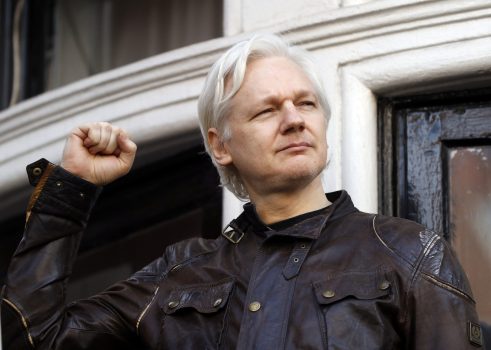
British authorities on Thursday morning arrested WikiLeaks founder, Julian Assange in response to a United States extradition request after Ecuador rescinded his asylum at its embassy in London, ending a standoff which lasted nearly seven years.
According to a statement released by London’s Metropolitan Police, Assange was arrested on behalf of the United States authorities and would appear in custody at Westminster Magistrates’ Court as soon as possible.
The British Police had originally sought custody of Assange for jumping bail after Sweden requested his extradition in a separate case stemming from sexual assault allegations.
Confirming the development, Assange’s lawyer, Jennifer Robinson said on Twitter that her client was arrested not just for breach of bail conditions but also in relation to a US extradition request.
Robinson disclosed that Assange met with the Ecuadoran ambassador this morning, where he was notified that his asylum had been revoked. The Metropolitan Police were then invited into the embassy to arrest him.
Ecuador’s President, Lenin Moreno had on April 11 announced that his government had made the decision to withdraw Assange’s asylum status because of his ‘discourteous and aggressive behaviuor’ and for violating the terms of his asylum.
Moreno specifically cited Assange’s involvement in what he described as WikiLeaks’ meddling in the internal affairs of other countries, referring to the leaking of documents from the Vatican in January.
“Mr. Assange violated, repeatedly, clear-cut provisions of the conventions on diplomatic asylum of Havana and Caracas, despite the fact that he was requested on several occasions to respect and abide by these rules.
“He particularly violated the norm of not intervening in the internal affairs of other states. The most recent incident occurred in January 2019 when WikiLeaks leaked Vatican documents,” Moreno said.
Also in a statement, Britain’s Home Office said Assange was arrested in relation to a provisional extradition request from the United States, where he is accused of computer-related offences.
Video of the arrest showed a gray-bearded Assange being pulled by British Police officers down the steps of the red-bricked embassy and shoved into a waiting police van. Assange appeared to be physically resisting the arrest, with his hands bound in front of him.
However, WikiLeaks has protested the arrest of the 47-year-old Australian-born Assange and used the occasion to solicit support for him on Twitter.
“This man is a son, a father, a brother. He has won dozens of journalism awatrds. He’s been nominated for the Nobel Peace Prize every year since 2010. Powerful actors, including CIA, are engaged in a sophisticated effort to dehumanize, delegitimize and imprison him,” the group tweeted.
Recall that ahead of the 2016 US elections, WikiLeaks released tens of thousands of e-mails that had been stolen from the Democratic National Committee and from Hillary Clinton’s campaign chairman, John Podesta, in cyber-hacks that US intelligence officials concluded were orchestrated by the Russian government.
Assange has been on the radar of US prosecutors since 2010 when WikiLeaks published 250,000 diplomatic cables and hundreds of thousands of military documents from the Iraq War, prompting denunciations by then-Secretary of State, Hillary Clinton and other senior Pentagon officials.
Although Assange made no secret of his intent to damage Mrs. Clinton, he however insisted that he did not get the e-mails from Russia.
Mr. Assange’s arrest now opens a new avenue for United States’ counter-intelligence investigations into Russia’s efforts to interfere with the presidential election.
This is even as US Attorney General, William Barr has said that Robert S. Mueller, the Special Counsel charged with investigating the interference found no evidence that the Trump campaign had colluded with the Russia.
But indictments filed by Mueller have indicated that Assange may be in a unique position to know about any possible intersection of the simultaneous efforts by Russia and the Trump campaign to damage Clinton.
The indictment filed in January alleged that a top Trump campaign official had dispatched his friend, Roger Stone to get information from WikiLeaks about the potential disclosure of hacked Democratic Party e-mails.

Biden Administration Imposes New Sanctions On Iran Following Attack On Israel
Israel’s European Allies Urge Restraint Amid Escalating Tensions With Iran
Israel Prepares For Possible Attack From Iran As Tensions Escalate
Senegal’s President Bassirou Appoints Ousmane Sonko As New Prime Minister